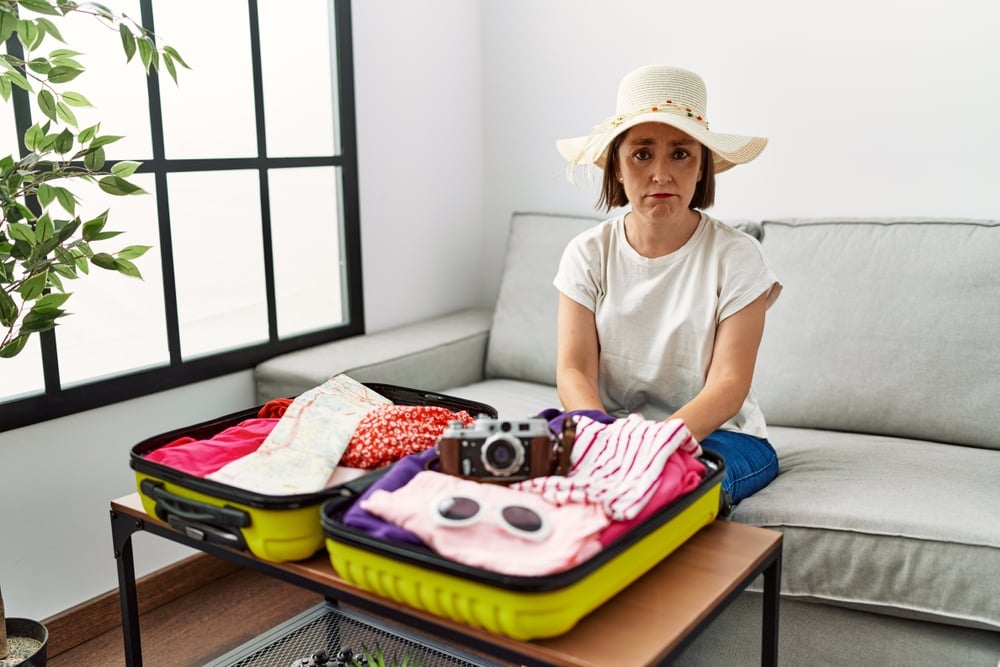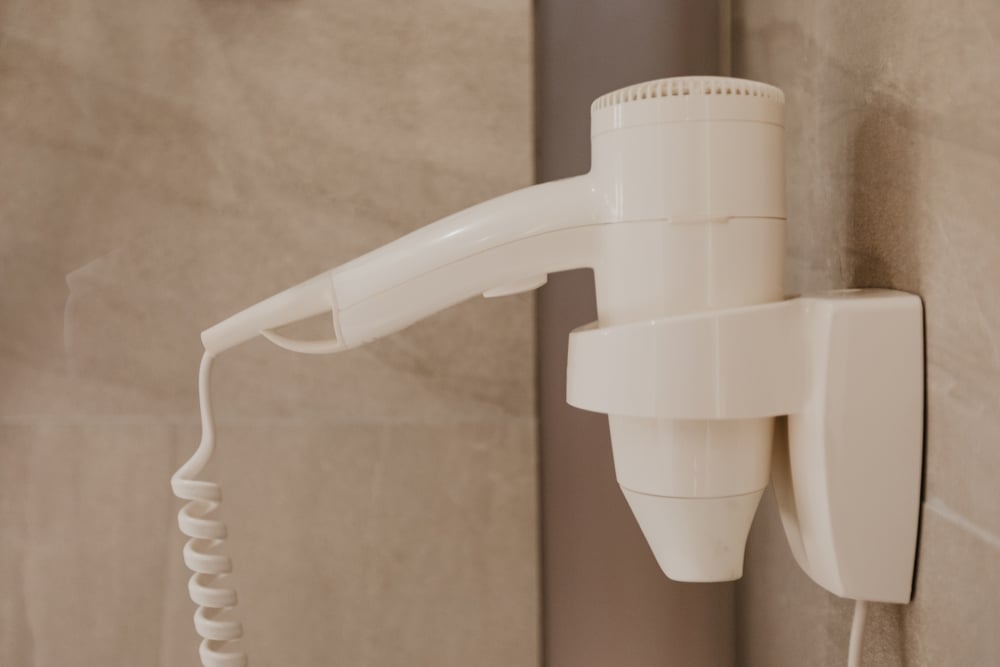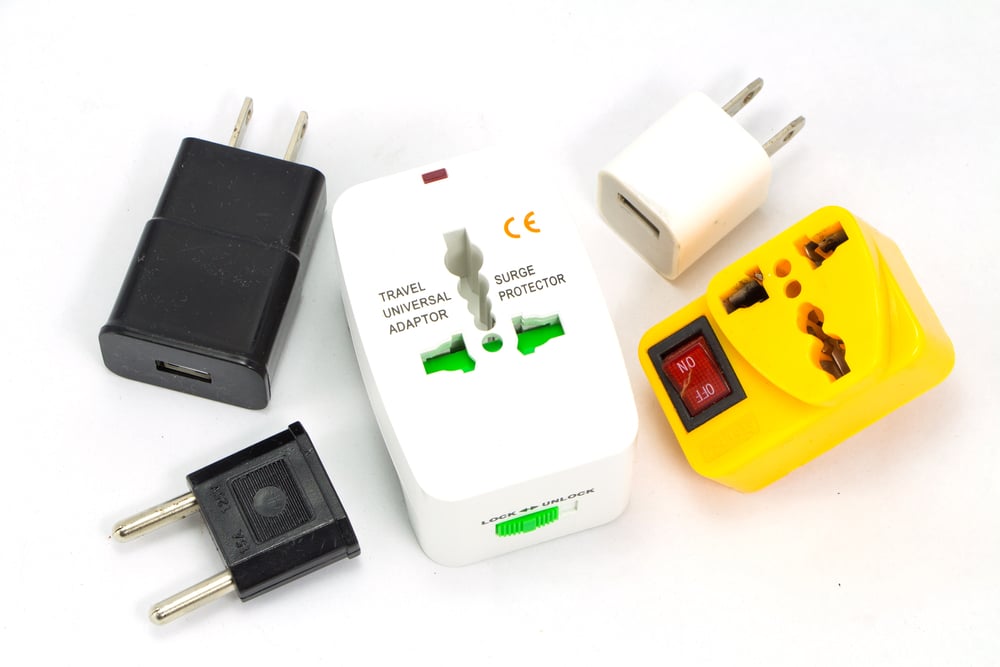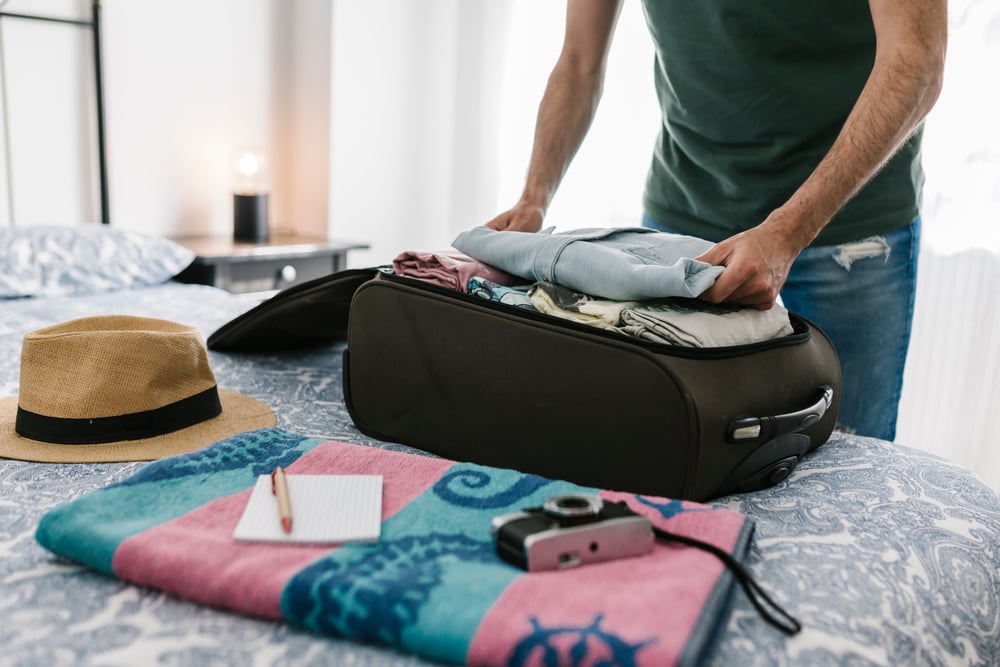You’ll thank yourself later for skipping these things and grabbing them in Europe instead.

The thrill of planning a trip to Europe often comes with the urge to overpack. You imagine every possible situation—rainstorms, dressy dinners, surprise museum visits—and suddenly your suitcase is bursting at the seams. But some items you think you can’t live without are actually easier, cheaper, or smarter to pick up after you arrive. In fact, packing them might end up being more hassle than help.
The truth is, European stores have nearly everything you’ll need—and in many cases, what they offer is better suited for the local climate, culture, or outlets. Holding off on these specific items not only saves you luggage space but also gives you a chance to travel lighter and blend in a little better. Here are ten things you’ll likely regret bringing across the ocean because you’ll wish you had just bought them once you got there.
1. Travel-size toiletries take up space and get used up fast.

They seem like a smart, compact solution when you’re packing, but those little bottles of shampoo, conditioner, or body wash don’t last more than a few days. You’ll probably end up running out halfway through your trip and needing to buy more anyway. Plus, there’s always the risk they’ll leak in your bag or get flagged at airport security.
In Europe, even small local pharmacies and grocery stores carry travel-sized toiletries for cheap, often in familiar brands or high-quality European ones you might even prefer, as per Emma in her own blog. Buying them there means you’re not wasting space in your carry-on or dealing with the liquids rule. It’s more convenient to just pop into a shop once you land and stock up, especially if you’re staying in one place for a few days. You’ll save room and avoid the mess and stress altogether.
2. Bulky guidebooks are heavy and mostly unnecessary now.

Stuffing a thick travel guide into your luggage might feel nostalgic or reassuring, but it’s probably going to collect dust in the bottom of your backpack. With so many apps, offline maps, and local recommendations available at your fingertips, most travelers get by just fine without the physical book.
In Europe, if you really need a guide, you can find compact and current versions at bookstores or even hotel lobbies. Plus, you’ll get more up-to-date tips by talking to locals or joining a walking tour. Carrying a guidebook everywhere also marks you as a tourist, Brendan Sainsbury shared at Lonely Planet. You’ll find that blending in and staying flexible often leads to better experiences than sticking rigidly to pre-printed pages. Save the weight and space for something more valuable, like souvenirs or snacks.
3. A universal hair dryer is more trouble than it’s worth.

Even the models labeled “dual voltage” tend to misbehave once they meet European outlets. You might be tempted to bring your favorite hair dryer from home, but chances are high it won’t work as expected or could even burn out mid-blow-dry. Plus, they’re bulky and take up valuable space in your suitcase.
Hotels and Airbnbs across Europe typically provide hair dryers, and if they don’t, you can easily pick one up at a local store for under 20 euros, authors at Grand European Travel stated. They’re designed to work perfectly with the local voltage, and some are even better quality than what you brought from home. Unless your styling tool is non-negotiable, you’re much better off skipping it entirely and trusting you’ll have access to one where you’re staying.
4. Too many shoes will weigh you down and slow you down.

Bringing a pair for every outfit or occasion might seem like smart planning, but it’s one of the fastest ways to overload your luggage. Shoes are heavy, take up awkward space, and you’ll likely end up wearing the same two pairs anyway. All those extras just sit there, taking up room and reminding you of your poor packing choices.
If you truly need a different pair—for hiking, dress-up, or unexpected weather—you can buy affordable options locally. European shoe shops often carry stylish and functional choices suited for the terrain and climate. You’re better off focusing on a couple of versatile pairs you can walk in comfortably, then adjusting your wardrobe based on what you actually need once you’re there. Your back and your sanity will thank you.
5. Plug adapters are better chosen once you know the outlets.

It’s tempting to buy a bunch of adapters before your trip, especially those “universal” bricks with twenty sliders and fold-out prongs. But they’re often clunky, unreliable, and more than you’ll need. Countries in Europe can have slightly different plug styles, and it’s easy to get the wrong ones if you’re guessing from home.
Once you arrive, it’s simple to grab a small, specific adapter from a convenience or electronics store. Locals use them all the time for travelers, and they cost very little. Plus, the quality is usually better than the plastic multi-adapters sold online. Waiting to buy your adapter abroad ensures you’ll get the right fit—and not waste money or suitcase space on something that doesn’t work when you need it.
6. Snacks from home often go uneaten and get crushed.

Packing granola bars, trail mix, or your favorite crackers might feel comforting, especially if you’re worried about strange food or long train rides. But the truth is, those snacks often get crushed in your bag or forgotten altogether. You’ll be surrounded by delicious and fresh local options, many of which taste way better than anything you packed.
European bakeries, supermarkets, and corner shops offer an amazing range of snacks at low prices. Trying local food is half the fun of traveling, and you’re likely to discover new favorites you’ll miss when you return. Instead of hoarding familiar snacks from home, leave the space open and enjoy the chance to explore a new food culture bite by bite.
7. Heavy coats are a pain to carry if the weather shifts.

It’s natural to want to be prepared for chilly nights or unexpected rain, but hauling a big winter coat through airports and train stations isn’t fun. If you’re visiting Europe in spring or fall, temperatures can swing dramatically, and what felt like a smart packing choice might quickly turn into a sweaty burden.
Instead, pack layers and bring a lightweight jacket or windbreaker. If it turns out you truly need something warmer, you can find affordable coats at secondhand shops or budget retailers throughout Europe. You’ll likely end up with something more stylish and better suited for the current climate than what you brought. Plus, it makes for a fun shopping experience and a wearable souvenir.
8. Over-the-counter medications are widely available abroad.

Many travelers feel safer bringing an entire mini-pharmacy along—pain relievers, cold meds, allergy pills—just in case. But these are easy to find in most European countries at pharmacies where the staff are helpful and knowledgeable. You don’t need to lug around a bulky bag of just-in-case pills.
Unless you require a specific prescription medication, you can buy what you need if and when symptoms arise. In fact, European equivalents of familiar medications are often cheaper and just as effective. Pharmacists will usually understand your symptoms, even if there’s a language barrier, and suggest something on the spot. A tiny travel first-aid kit is enough to bring—anything more, and you’re just wasting space.
9. Towels take up too much room and aren’t worth the squeeze.

Even the thinnest travel towels are bulky when folded up, and once they’re used, they take forever to dry. If you’re staying in hostels or budget accommodations, you might be tempted to pack one, but it’s almost always unnecessary. Most places provide towels, and if they don’t, you can rent or buy one locally for very little.
Laundromats and home rentals often have extras, and it’s easier to grab a quick-dry towel abroad than to sacrifice space in your bag from the start. Unless you’re camping or staying somewhere completely off-grid, towels just aren’t worth the weight. It’s one of those things that sounds smart on paper but ends up being an annoying item to deal with after a few days of travel.
10. Fancy outfits are rarely needed and often go unworn.

You might imagine romantic dinners in Paris or evenings out in Rome where you’ll need that one formal outfit—but the reality is most European cities are stylishly casual. Unless you’ve booked something truly upscale, you’re more likely to regret bringing dressy clothes that never make it out of your suitcase.
Instead, pack one versatile outfit that can be dressed up or down. If you end up needing something fancier, European stores have great options at reasonable prices—and it can be fun to shop for a one-time outfit you’ll always associate with your trip. Most travelers find they wear the same comfortable clothes day after day, and that “just in case” dress or blazer only takes up valuable space.
